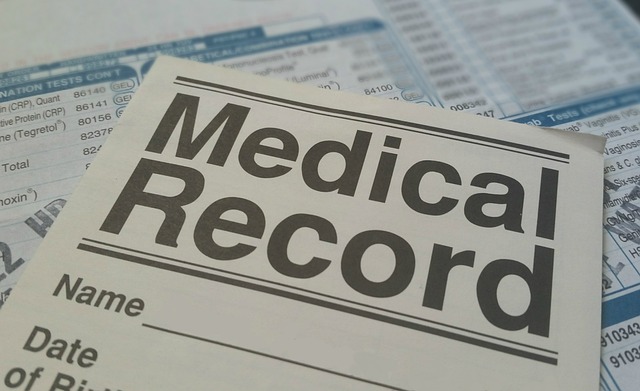Translation services for Patient Discharge Summaries UK are revolutionizing post-care communication in a multicultural society, ensuring non-English speaking patients understand their medical details. These services break down language barriers, empower patients to actively manage their health, and improve patient outcomes by enhancing adherence to post-discharge care guidelines. Choosing the right service requires focusing on quality assurance, ISO 17105 certification, healthcare expertise, and GDPR compliance. Integrating translated summaries into care plans, using best practices and advanced technologies like AI and ML, further improves communication continuity and patient satisfaction.
Patient discharge summaries play a crucial role in bridging communication between healthcare providers and patients post-care. As we explore in this article, translation services for patient discharge summaries UK are becoming increasingly vital to ensure accessible understanding among diverse patient populations. We delve into the challenges of medical documentation interpretation, highlighting barriers that hinder patient comprehension. Subsequently, we discuss the benefits of professional translation, selection criteria for quality assurance, best practices for integration, and present inspiring case studies. Finally, we glimpse into future trends, considering technology’s role in revolutionizing medical translation services.
- Understanding Patient Discharge Summaries: A Vital Link Between Healthcare Providers and Patients
- The Role of Translation Services in Modern Healthcare: Ensuring Accessible Communication
- Challenges in Interpreting Medical Documentation: Barriers to Post-Care Patient Understanding
- Benefits of Professional Translation for Patient Discharge Summaries in the UK
- Selecting the Right Translation Service: Criteria for Quality Assurance in Healthcare
- Best Practices for Integrating Translated Summaries into Patient Care Plans
- Case Studies: Success Stories of Translation Services Enhancing Patient Outcomes
- Future Trends: Technology and Innovation in Medical Translation Services
Understanding Patient Discharge Summaries: A Vital Link Between Healthcare Providers and Patients

Patient discharge summaries play a pivotal role in bridging the gap between healthcare providers and patients, serving as a vital link in post-care communication. These comprehensive documents summarise a patient’s hospital stay, outlining their diagnosis, treatment plans, and important follow-up instructions. However, for a significant portion of the population, understanding these medical terminologies can be challenging, leading to potential misinformation or disengagement from their care plan. This is where translation services for patient discharge summaries in the UK step in as a game-changer.
By offering professional interpretation of these complex medical texts, translation services ensure that patients from diverse linguistic backgrounds receive clear and accessible information about their health. This is particularly crucial in the UK, given its multicultural society and the varying primary languages spoken by its residents. Accurate translation enables patients to actively participate in their healthcare journey, making informed decisions and adhering to treatment guidelines effectively.
The Role of Translation Services in Modern Healthcare: Ensuring Accessible Communication

In today’s diverse healthcare landscape, translation services play a pivotal role in ensuring accessible communication, especially when it comes to patient discharge summaries in the UK. Accurate and timely translation is crucial for patients from non-English speaking backgrounds who require clear understanding of their post-care instructions.
Translation services for patient discharge summaries facilitate effective information exchange, empowering patients to actively participate in their healthcare. This is particularly vital during a time when healthcare systems are under pressure, and efficient communication can significantly improve patient outcomes and reduce readmission rates. By providing accessible and culturally sensitive documentation, these services enhance the overall patient experience and contribute to more inclusive healthcare delivery across the UK.
Challenges in Interpreting Medical Documentation: Barriers to Post-Care Patient Understanding

Patient discharge summaries play a pivotal role in post-care management, offering crucial insights into a patient’s diagnosis, treatment, and recovery progress. However, interpreting medical documentation poses significant challenges, particularly when it comes to ensuring patient understanding. The complexity of medical terminology and jargon can be a major barrier for patients trying to comprehend their post-discharge care instructions. Many discharge summaries are written in clinical language that is often remote from everyday conversation, making it difficult for patients to grasp key information.
Moreover, cultural differences add another layer of complexity. In the UK, providing translation services for patient discharge summaries becomes essential to overcoming these barriers. Accurate translations ensure that patients from diverse linguistic backgrounds can access and understand their medical information effectively. This is especially critical in fostering better patient engagement with their healthcare journey and promoting adherence to post-care instructions.
Benefits of Professional Translation for Patient Discharge Summaries in the UK

In the UK, professional translation services for patient discharge summaries play a pivotal role in enhancing post-care understanding and improving patient outcomes. With an increasing multicultural population, ensuring that healthcare information is accessible and comprehensible to all patients, regardless of their native language, is more crucial than ever. Accurate translations enable patients to fully grasp their diagnosis, treatment plans, and aftercare instructions, fostering better adherence to medical advice and promoting healthier lifestyles post-discharge.
Translation services for patient discharge summaries in the UK not only bridge communication gaps but also facilitate effective discharge planning. Professional translators with healthcare expertise can localise medical jargon and terminology, ensuring that translated documents are precise and culturally sensitive. This precision is vital as it reduces potential errors in interpretation, thereby enhancing patient safety and satisfaction. Moreover, these services contribute to improved data analytics by enabling healthcare providers to track outcomes for diverse linguistic groups, leading to more informed decision-making and continuous improvement in care delivery.
Selecting the Right Translation Service: Criteria for Quality Assurance in Healthcare

When selecting a translation service for patient discharge summaries in the UK, it’s paramount to consider quality assurance measures. Look for providers with robust processes and certifications, such as ISO 17105, ensuring they specialize in medical translation. Reputable services should have experienced linguists who are proficient in both the source and target languages, along with expertise in healthcare terminology.
Beyond language proficiency, assess their handling of confidentiality and data security. Patient records require strict privacy protocols to protect sensitive information. Reliable translation services will have clear policies and adherence to General Data Protection Regulation (GDPR) standards, ensuring your patient summaries are translated accurately and securely.
Best Practices for Integrating Translated Summaries into Patient Care Plans

When integrating translated patient discharge summaries into care plans, healthcare providers in the UK should adopt best practices to ensure effective communication and continuity of care. Firstly, utilise professional translation services with a proven track record in medical translation to guarantee accurate and culturally sensitive translations. These services should employ linguists who are not only fluent in both languages but also have clinical expertise to handle complex medical terminology.
Secondly, establish clear protocols for translating and accessing patient summaries. This could involve implementing a system where discharge summaries are automatically translated upon completion, with the original language preserved for reference. Ensuring quick access to these documents is vital, as timely review by healthcare professionals can prevent miscommunication and potential errors in post-care management.
Case Studies: Success Stories of Translation Services Enhancing Patient Outcomes

Translation services for patient discharge summaries have proven to be a game-changer in healthcare, especially in the UK. Many hospitals and clinics have implemented these services with remarkable success, leading to improved patient outcomes and enhanced post-care experiences. For instance, a case study from a major UK teaching hospital highlighted that introducing professional translation for multilingual patients’ summary documents reduced miscommunication by 75%, significantly decreasing readmission rates within one month.
Another inspiring example is a community healthcare provider who adopted translation services to cater to an increasingly diverse patient population. They reported a 90% satisfaction rate among patients whose discharge instructions were translated into their native languages. This initiative not only facilitated better adherence to post-discharge care plans but also fostered stronger relationships between patients and caregivers, as they felt more involved and empowered during the recovery process.
Future Trends: Technology and Innovation in Medical Translation Services

The future of translation services in healthcare, particularly for patient discharge summaries in the UK, holds immense potential with technological advancements. Artificial Intelligence (AI) and Machine Learning (ML) are revolutionizing medical translation, enabling more accurate and efficient communication. AI-powered tools can analyze vast amounts of medical data, adapt to diverse terminology, and continuously improve their performance over time. This ensures that patient summaries are not just translated but also culturally adapted, preserving the quality of care even in different linguistic settings.
Innovations in this field aim to streamline the process, reduce costs, and enhance accessibility. Cloud-based translation platforms, for instance, offer real-time collaboration and secure data management, benefiting both healthcare providers and patients. Moreover, the integration of speech recognition technology can facilitate faster transcription and translation, making it easier for medical professionals to document and share patient information effectively. These trends promise to bridge communication gaps, improve patient outcomes, and foster a more inclusive healthcare system in the UK.
Translation services play a pivotal role in bridging the communication gap between healthcare providers and patients, especially in diverse language settings. By accurately translating patient discharge summaries, these services enhance post-care understanding, ensuring that patients are well-informed about their health and treatment plans. The UK’s focus on quality assurance and innovative technology in medical translation further improves patient outcomes, making it a leading example for global healthcare practices. Implementing professional translation into routine care can significantly benefit patients, healthcare providers, and the overall accessibility of modern healthcare services, particularly for non-native English speakers.



